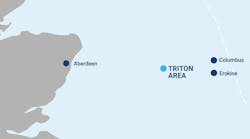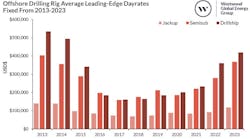JB Offshore's Gull Scat offshore bird deterrent system.Increasing numbers of normally unmanned platform installations are bringing new problems to offshore operators - birds. The birds are either migrating through the area of the installation or are seabirds feeding in the area. For both types, the platform is a convenient place with lots of perches for them to rest on.
Most of the problems are caused by seagulls. From a seagull's point of view, the helideck is the most attractive area to rest because it is easy to land and take off from (as it should be!), with a helideck net to hold on to, but it also has the space to allow the birds to stay together in a flock. Unfortunately, the helideck is also the main platform access point, so it is important to keep it clear of obstructions and the markings easily visible at all times.
Havoc created by the birds' actions is greater than might be imagined:
- Obscuring of helideck operations causes helicopter operations to be suspended after dusk.
- A helicopter landing has to be aborted and the passengers returned to base, because birds would not vacate the helideck.
- The visiting crew can be exposed to potential diseases found in gull guano, such as E Coli, salmonella, botulism, and campyllobacter.
- Having to clean up the guano pushes up platform maintenance costs.
- Alighting crew can be exposed to hazards caused by slippery wet guano.
- A bird strike can damage the aircraft, thereby endangering the safety of crew and passengers.
In November 1995 two sister platforms in the UK Southern North Sea had their helidecks cleaned and refurbished. A prototype Gull Scat was installed on the helideck of the Alpha platform, but not on the Bravo platform. By August 1996, the Bravo's helideck had been covered with gull's guano to a depth of some inches, resulting in helicopter operations being suspended after dusk because the helideck markings were too obscured for safe landings. Despite regular cleaning, the problem persisted.
At the same time, Alpha's helideck had remained clear, with no interruptions to helicopter operations. As a result of this trial, the platform operator purchased 13 Gull Scat systems for use on other unmanned southern sector installations.
Gull Scat will be featured at the Great Yarmouth Marketing Initiative stand (Red 331) at Offshore Europe, Aberdeen next month.
Copyright 1997 Oil & Gas Journal. All Rights Reserved.




